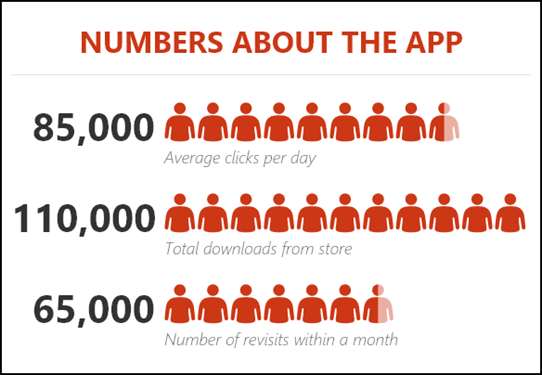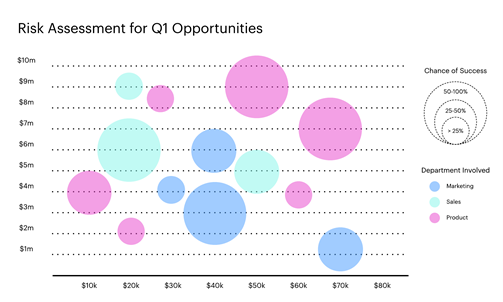Content begins here
Contenido de la página principal
Pulsa para colapsar
Business Plan
Introduction
A solution to a problem can be brilliant, it won’t last for long if it is not supported by a strong business plan. This part of the pitch is about providing evidence of the viability of the solution, supported by a solid market analysis.
Once this lesson is completed and approved, learners will be able to:
-
Contextualise their project in a business market
-
Select the relevant key performance indicators
-
Present expected results from a business perspective
In this lesson, we will learn how to justify the viability of our project in a business market, showing its value and potential to reach success.
This will rely on a market analysis and performance indicators that will show how our project answers to an uncovered business opportunity.
1. Presentation of your market
This part is not about entering in a full and deep presentation of your market study or business plan. Here we assume that you already did this work (and we recommend you to go through previous business courses of O-CITY to review your business model). Always, an elevator pitch is about getting to the point. Depending on the pitch format, you will count with approximately 1 minute to present your business plan, so you should focus on essential elements only. However, it is important to at least show that you made a market study, and that you are aware of your market size, with honest expectations about the market share you might reach.
For a short introduction to your market size, you can use a TAM – SAM – SOM model, for instance based on this kind of template:

Another important factor would be to talk about the annual growth of this market, showing if it is an emerging market or a mature one. If you opt for the presentation of a SWOT analysis, keep it very simple, with no more than one or two key elements in each of the categories. Do not deny weaknesses and threats, but as your objective is to sell your project idea, insist on the strength and opportunities.
2. KPI
KPI stands for Key performance indicators. They can refer to financial indicators and level of sales, but not only: you can also refer to customers, people inside the organisation and HR, social and environmental impact, etc. Here are some examples:
-
Growth in Revenue
-
Profit margin
-
Cost of goods sold
-
Cash flow
-
Turnover
-
Number of customers
-
Cost of Customers acquisition
-
Customer Lifetime value
-
Customer satisfaction
-
Quality of products (% of defects)
The use of metrics and indicators comes to present numbers that support the business aspect of your idea, with concrete elements and numbers that will comfort the idea of your project economic viability. They will provide valuable information on your achievements to the date and realistic expectations for the future. Also, for them to reach the expected impact, you should take care about the KPI that you choose to show. They need to be relevant to your project and add real value. In order to be valuable, those KPI need to be:
-
Available and measurable (so they can be analysed)
-
Periodical, so they allow comparison
-
Relevant, and being associated with concrete results.
Showing the number of pre-orders that you have received for the development of a product is promising. Showing the number of likes you have on social networks is good for vanity, but is not significant in terms of business performance.
When talking about numbers, you should think at different forms of presenting those in a visual way, for instance using figures of people:

Retrieved from https://excelchamps.com/blog/people-graph/ on December 2nd 2020)
Or inserting bubble graphs:

Retrieved from https://www.lucidchart.com/blog/how-to-make-a-bubble-chart-in-excel on December 2nd 2020

Retrieved from https://www.economist.com/blogs/dailychart/2010/12/europes_economies on December 2nd 2020)
Always, remember to use visual tools.
3. Current investors / business partners
If you already have investors, or if you already count with powerful business partners, and especially if those are known, don’t hesitate to mention them to add credit to your project.
4. Business model
If your business model presents any particularity, regarding your way of developing your product, your social involvement, or specific distribution channels, for instance online, you can also present them as part of your business plan. If you are engaged in a circular economy process, also present this particularity as an asset.
5. Technology readiness level - TRL
If your project involves the development of new technologies, or technological innovation, it might be interesting to mention its level of development, using the following scale, that is normally used as a reference in Europe in this field:

This can also help you to make a transition to your needs to go further in the technological development of your idea, if necessary.
As a general tip for the presentation of your business plan, a good idea would be, previous to your pitch, to perform a short investigation on the fields of interests of your audience. For instance if those are investors, you should know what is their perception toward ecology, social involvement, etc. Then, you can highlight those aspects of your project during your presentation, you will get to them more easily and attract their attention.
Conclusion
This part of the pitch is probably the most difficult to handle, as it has more technical content and you need to make sure not to lose your audience's attention on the way. The challenge is to keep it simple, but providing strong evidence of the value and viability of your project on a business market and economic aspects. For this, you need to rely on a strong previously established business plan from which you will pick up the key elements that need to be introduced. For more information about the business model creation or testing business ideas, you can refer to our courses III.1 and III.5, respectively.
Video and PDF presentationPulsa para colapsar
The following video explains the content of this lesson and shows some examples:
Video T2.L4. Business Plan
Here you have the content of the video in pdf in case you need to use it in your classroom:
Lesson contents in PDFPulsa para colapsar
Here you have the contents of the lesson in PDF:

